Build Design Systems With Penpot Components
Penpot's new component system for building scalable design systems, emphasizing designer-developer collaboration.

UX Planet — Medium | Guy Ligertwood

Intro Article: read this first to get to know the designers
(If you’ve read the intro article feel free to scroll down to the designer’s answers)
I’ve brought together twenty great designer’s from Australia, Canada, South Africa, Peru, Russia, Taiwan, England, America, and Italy.
They work at Medium, Facebook, You Tube, Google, start ups, agencies, banks, as designers, leaders, consultants, advisors, and educators.
Each week for twenty weeks we’ll dive deep into one design related question, answered by all the designers.
Get design tips, increase your design knowledge and be inspired to become a better designer.
Simon Pan — Medium
Stephanie Engle — Facebook
Andrew Doherty — Another.ai
Nirissa Govender — Standard Bank
Adham Dannaway — Freelance
Leah Buley — Independent Design Advisor
Ben Huggins — You Tube
Chirryl-Lee Ryan (Cheech) — Isobar
Charbel Zeaiter — Academy Xi
Audrey Liu — Thumbtack
Nick Babich — Ring Central
Paola Mariselli — Facebook
Michael Wong (Mizko) — Mizko Media
Kymberlee Ide — McCann
Alessandro Floridi — Deloitte
Leslie Chicoine — Experience Design / Product Management Consultant
Buzz Usborne — Help Scout
Kylie Timpani — Humaan
Graeme Fulton — Marvel
Kaiting Huang — Google
Big thanks to all the designers 🙌

Australian 🇦🇺
I fell in love with technology as a kid watching my friend’s older brother play his Commodore 64. I was fascinated by how he would type instructions at a bright blue screen and the machine would decide if he could enter an alternate world.
I loved the intelligence, the 8-bit graphics and sounds of the command prompt just as much as the games.
The idea that someone else had designed for that experience blew my mind.
I stayed obsessed with computers through High School and decided to naively pursue a Computer Science degree with little understanding of what I wanted to do with it. To get there, I had to drop Arts and Music (which I excelled at) in favour of taking on advanced Math and Physics (which I sucked at). This should have been an early warning sign.
I flunked the first two years of computing subjects, and by my third year, I was so lost. I did not understand the “why?” behind the Kano maps, the bubble sorts and the text-to-console style assignments. Those subjects were just punishing.
Luckily, my Philosophy and Psychology grades were notable enough to protect me from being kicked out of Uni. My sneaky plan was to graduate by choosing the “easy” final year subjects, which included Human-Computer Interaction (HCI). HCI did not have a programming component and was run by Dr. Daniel Woo, an inspiring lecturer that was into storytelling just as much as he was into unit testing.
My first HCI assignment was to design a system to minimise water wastage. I was so fascinated by the human-centred design process that I exhausted the faculty’s design courses and ended up working with Daniel in the HCI lab for the following four years.
At that time, User Experience Design (UX) was not a formal discipline. So I kind of did everything I could to learn about design, including research, usability consulting, information architecture, interaction design, UI design and web design.
My pivotal project with Daniel was for the not-for-profit government organisation for allied health professionals and assistive technologies — The Independent Living Centre NSW (ILC NSW). I witnessed the pain inflicted by poorly designed technology and how that negatively affected the ILC staff’s ability to provide effective client care.
Each small improvement I made to the user experience improved people’s days tenfold. All those moments summed up to a week. People’s moods changed. People’s attitudes changed. People’s behaviour changed.
When I realised that my designs changed people’s potential, I knew I wanted to be a designer.
simonpan.com or on twitter

American 🇺🇸
I started in photography and learned the hard skills I needed to design throughout running a photography business in high school.
When I arrived at college, I know I wanted to do something “creative and business-ey” which I thought was marketing.
I applied for and became the Chief Marketing Officer for Campus Enterprises, a sort of Postmates on university food points that was run by seventy-five students and had operated independently from Duke for twenty years.
Everything I did that I thought was “marketing” — from making a website for our services to designing delivery apps — was actually design.
I then interned at Secret in marketing/product, where I realised what a design job was.
I read everything I could on design to prepare for applying to jobs, but Julie Zhuo’s articles on Facebook design drew me in because of my studies in social systems.
I reached out to her about internships for the following year, but she took a shot on me for that year. I ended up helping to redesign Facebook Profiles, then returned a year later to design VR/360 media.
On Twitter

Formerly Product Design Manager at Google, Mountain View
Australian 🇦🇺
I realised half way through my archaeology degree that the chances of success in the career were going to diminish over time, not improve.
Information technology seemed to be a career that was going to increase in potential rather than decrease, so I took a bet and made a dramatic pivot.
I taught myself how to code by reading online tutorials and started by making shitty websites for friends and family. Many years later, I was fortunate enough to dream up futuristic products for Google.
My website or on Medium

South African 🇿🇦
Growing up I have always had a creative side. But Design as a career path pretty much found me. After high school, I studied accounting part time and worked at a pizza shop (accounting as my dad tried to push me into that career path). After a year of serving pizzas, I got a job as a receptionist at a computer repair company.
The computer that I worked on had Coral Draw. I started playing around with it in my free time and thought it was pretty cool.
I then applied for a junior accounting position at a printing company. I didn’t get the job, but they offered me something else.
I could come in and learn how to design for print, and if I did well, I would get a perm position. So I took on the challenge, no pay of course 😐
After a few months of print design, I thought maybe I do have some skill in this design thing, so I abandoned the accounting studies. I became a permanent employee and learned everything that I could.
After some time, the print world became a bit boring. I then found an internship at a digital agency. I was fascinated by the work that this company was doing at the time. They were creating apps way before the iPhone was even launched in South Africa. It was a new space with new opportunities, and I was in the right place at the right time. I had never done web/app work before, so I was keen to try.
I worked under a fantastic mentor who taught me everything he knew. As a UI Designer at this company, I had the freedom to experiment with ideas and learn from my colleagues.
Fast forward five years and I had reached my potential with the company, so I decided to look for a new job in Johannesburg, another city.
After two years at an amazing digital agency working as a UX/UI designer, I applied for a Bank job. I had just gotten married and it was time to look for job security while still enjoying what I do.
And here I am, a Product designer at Standard Bank. Its a great company, has the vibe and energy of an agency but also the steadiness and structure of a corporation. I love it and I don’t think I’d ever go back to full on agency life.
It’s been 13 years since high school and its been a long journey to get to where I am. It took some time for me to find my path and my passion for design, but now that I have, I’m truly excited about what the future holds for me.
To me, it’s an exciting time to be designer 🙂
My Linkedin

Australian 🇦🇺
Since I was a kid, I’ve always loved art, craft, drawing and building things. While I found creative ventures fun, I only ever pictured myself doing a regular ‘stable’ job at a big company.
At the end of high school I didn’t know what I wanted to do or what was out there, so I just copied a few of my friends and studied computer science at university. I enjoyed coding, but I knew that something was missing.
After university, I was lucky enough to score an IT internship at a big company. I jumped around different areas of the company until I landed in the website design team. It was love at first sight.
From that point on, I started building all sorts of websites. They were pretty bad at first, but I quickly got to a point where I was confident enough to create a website for a company where my friend worked. Once I had that project under my belt, I continued to build my portfolio and gain experience.
I studied a Masters of Digital Media to further my skills and freelanced on the side to pay the bills.
I then started working client-side at various tech companies, agencies and corporates, absorbing as much as I could from my experienced work colleagues.
I’m currently a UI/UX designer doing contract work and enjoy the variety and freedom that this style of work provides. There’s always a new problem to solve, and I’m glad to be still building things just like I was when I was a kid.
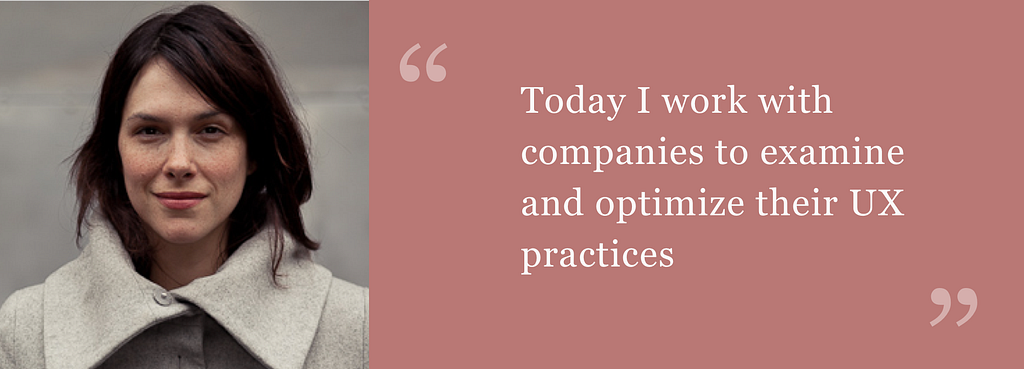
American 🇺🇸
At first, I wanted to be a writer. But it turned out that the most enjoyable part of my job at a magazine was when I got to update the website. So I became a developer.
The agency that I worked at also had information architects, and I quickly realised that they had the really enjoyable 3job, so I went back to school to for information architecture.
Then, back out into the work world. After many years in various UX roles, I went to work as an analyst, researching the evolving importance of the field of UX.
I went independent last year so that I could work with companies in a way that fused my analyst skills with my UX skills. Today I work with companies to examine and optimise their UX practices.

American 🇺🇸
I was that kid playing in Photoshop and making websites because I thought computers were cool. When I was thirteen or so, I gave my dad a coupon for “one free website” which he still has — good investment.
By the end of college, I was interning at a big ad agency, which was exciting and humbling. The problem was that younger employees there seemed unhappy.
I turned down the job they offered me and spent the next three years DJing and learning stage design with a crew called GrooveBoston.
Nothing will teach you to work through tough problems under pressure like a production job. Plus, I got plenty of reps in Photoshop cranking out swag, videos, promo materials and websites.
Next, I got hired at a company called SCVNGR (now LevelUp) to build out these giant mobile games for big brands. Over time, I ended up doing more product and design work. I was decent at this, but wanted a better foundation for my design decisions.
I simultaneously started a graduate program at Bentley University and signed on to lead design for an app called Highlight Hunter.
While finishing grad school, I lucked out and got an amazing internship with the UX team at Nest. I was blown away by the team, their craft and everything we were building.
The plan was to head back to Boston, but with a few offers on the table, I took a job at YouTube. They let me travel back to see my then-girlfriend-now-wife, Christy, until she was able to move out to San Francisco.
I’ve been at Google for 3+ years and have have been fortunate enough to be involved in some really exciting work.
hugg.in or I’m @bhuggins on Twitter and Instagram

Australian 🇦🇺
Design is in my DNA. My folks encouraged me to do anything creative from a very early age. I remember sewing clothes on my Nanna’s sewing machine at four or five years old.
But my first real design gig was in my second year of high school, as the editor of my school year book. I thought it was a excellent way to get out of class — little did I know it would become my life’s work.
The same year I started making DIY comic books to sell in a local comic book store and doing street art (legal of course!) 😉.
A couple of years later (1996), I got my first real job as a junior designer, and I made my first website. The rest, as they say, is history!
My Linkedin
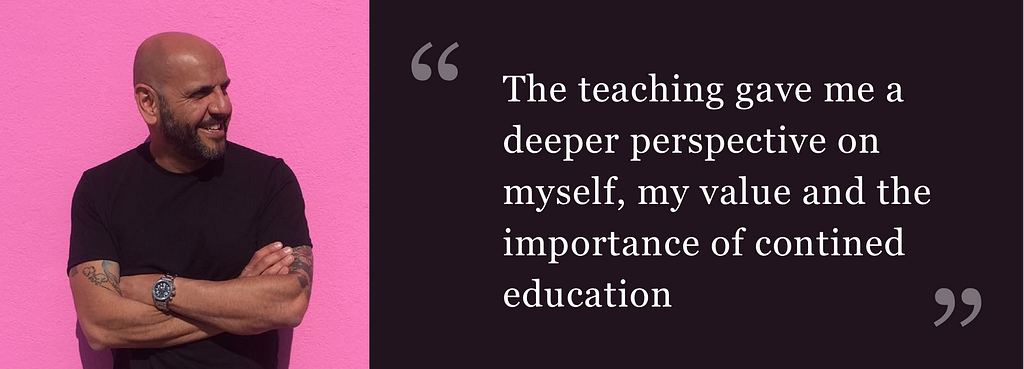
Australian 🇦🇺
I was one of the “lucky” ones that entered the digital arena at the time when the internet started to become a thing. Having studied a short program in graphic design, my first job was as a digital designer.
From there, I landed a role with an American company; I applied for a role as Senior Designer, but they offered me a role as an Information Architect, which transformed my perspective on what design means to the world.
From 1999 I worked mostly in Sydney and, after a six-month stint in London, I returned, searching for my next move and took up a teaching role for a short course.
The teaching gave me a deeper perspective on myself, my value and the importance of continuing education. This was a pivotal point for me; setting up an agency and what is now Academy Xi at the same time.
My Linkedin
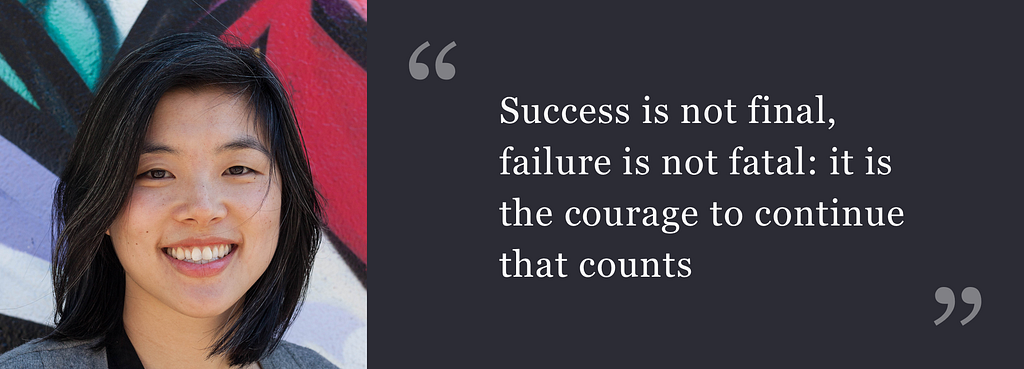
American 🇺🇸
While in college, I thought my only options for pursuing a creative career were to be an architect or a fine artist.
I had no idea that there was this entire field of design, let alone product design.
So, when I graduated, I got a job at Artforum (an arts magazine) in their advertising department, and it was there that I was first introduced to graphic design. I started to create a few small ads here and there and with the encouragement of my coworkers enrolled in a class at FIT on packaging design.
During that class, my teacher told me that it was clear that I preferred designing the thing in the package. I had always loved making things and coming up with smart solutions to problems, but I didn’t have the word to describe what I was doing. She said I should look into product design classes.
Luckily enough, Art Center was offering night classes in NYC at that point. I took one, fell in love with it, and a few months later decided to make the move to LA to pursue a degree and career in product design.
My Twitter
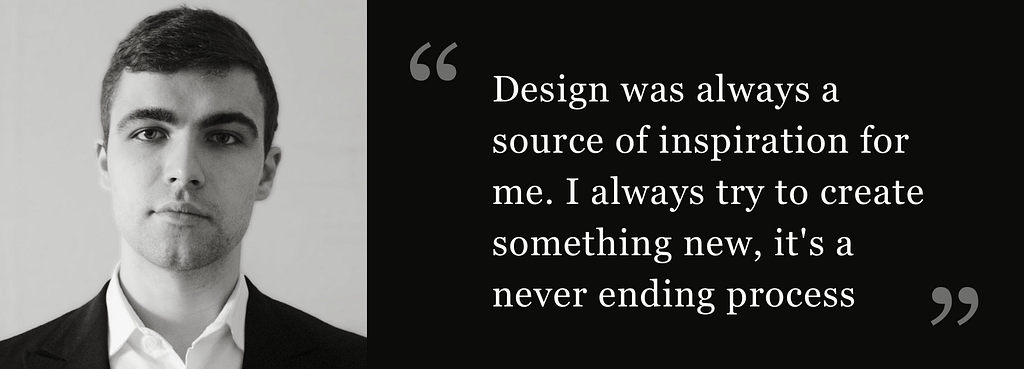
Russian 🇷🇺
Design was always a source of inspiration for me. I always try to create something new; it’s never ending process, and I think that software development is also a sort of design.
That’s why I really think that designers and developers aren’t that different. For me, a transition from development to design was natural.
I started as a full-stack developer and moved more into prototyping and management after a while.

Nationality: Peruvian 🇵🇪
I was around twelve years old when I first learned about the world of computers. Since then, from DOS gaming and graphic design to computer repair, I explored all I could from software to hardware.
Throughout the years, I explored many roles in the technology industry, including marketing, finance, and product management. Ultimately, I became a project manager at an investment bank.
While working there, I interacted with engineers who at some point would start asking me questions on software design. As I looked into giving them answers, I slowly learned about product design. After that, I knew my dream role was to be a product designer.
I transitioned from being a project manager on Wall Street to a product designer on Silicon Valley through a series of deliberate steps, which included leaving the workforce to pursue a graduate degree.
Now, I’ve been at Facebook for almost two years, and during this time, I’ve worked on Instant Articles, Facebook Live, Videos, and most recently, Albums.
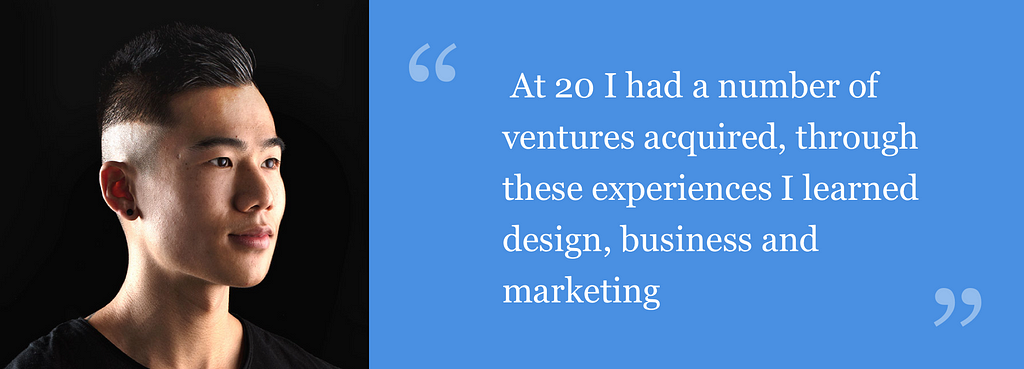
Australian 🇦🇺
It was all thanks to a game called Gunbound. I was quite the gamer in my early teens. Eventually, I wanted to sell my accounts, but there were no active Gunbound communities online, so I did some research and setup my first online community in 2009.
As the community grew into the thousands, I wanted to make the forum more appealing. I grabbed a copy of Photoshop and taught myself how to design a custom forum theme while also learning the basics of HTML/CSS. I was young and curious. One thing led to another, and I soon realised my new found love for the digital space.
I spent the next couple of years learning more about design, and built several websites which were acquired. Eventually I started to sell my design, front-end and marketing services to other entrepreneurs on other webmaster forums including 99designs, DigitalPoint and Sitepoint.
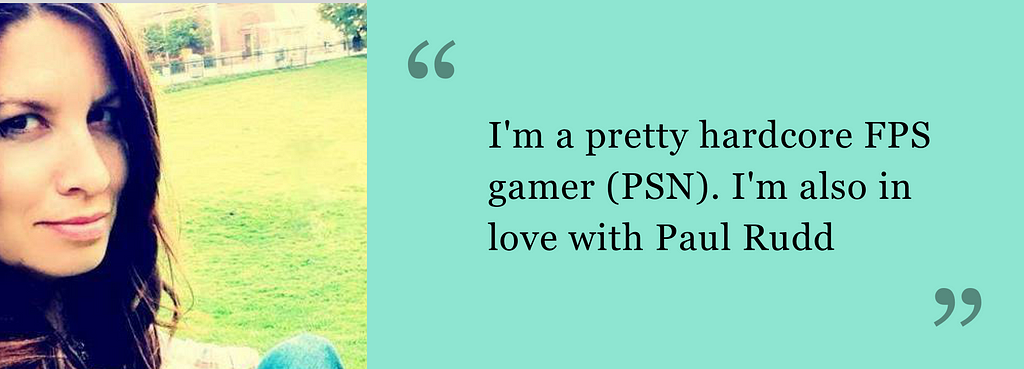
Canadian 🇨🇦
After I graduated from university, I started working for a new, online-based bank as a Communications Associate — basically, I was a grunt responding to emails sent in from customers.
It was my first real exposure to the issues and problems users were facing with our banking website (which had just launched).
My passion for solving problems became evident, and I moved up the ladder eventually managing a separate escalations team.
When I left, I decided that I wanted to take everything I had learned and build/design sites that were user-friendly. So I taught myself how to code (front end) and ended up running my own business for a while.
Eventually, I got bored and entered back into the regular job force, and my passion for user-centric design mixed with my love of solving problems led me into UX and CX.
I’ve always been about the experience — no matter who or what the situation is. Tackling complex problems and designing for the best possible experience is my thing.
My Linkedin

Italian 🇮🇹
I was studying Economics in Rome, but all I could think about was becoming a graphic designer. I imagined myself working in a cool agency in the centre of Rome talking about typography, photography and ads all day. In 1998 decided to start as an intern in an agency.
I fell in love with the web at that point, web+designer was the best combination of words in the whole English language, even better than “cellar door”.
Soon enough I understood that beautiful work was meaningless without taking into consideration the end user. I started learning psychology in my spare time and using what I learned at Uni in behavioural economics to influence my designs.
After many years in this industry, I still wake up in the morning with the same excitement when I was going to my first agency as an intern.
In the last few years I have worked for NBN, Canon Australia and I recently joined Deloitte.
My Linkedin
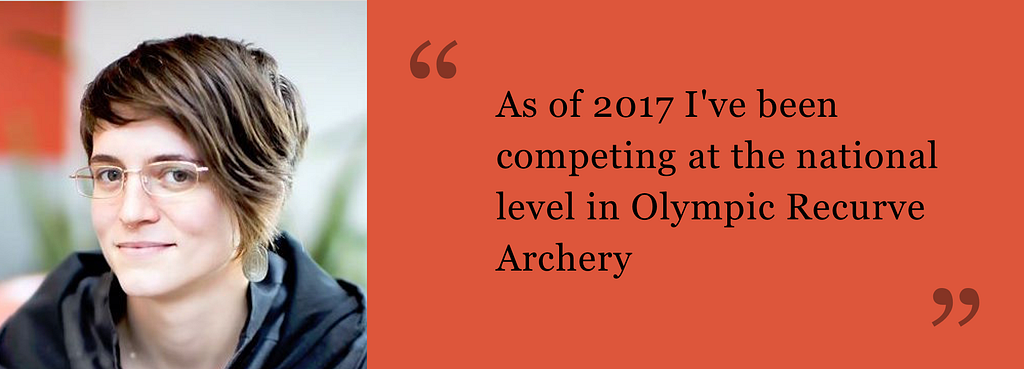
American 🇺🇸
I’ve always been a maker; always had a tiny studio space under the stairs or in the attic. I’ve always enjoyed making things that enabled others.
In college, I started as a photography major but gravitated towards game design and more immersive forms of design (ask me about the Inconvenience Store).
After graduating, I spent a year in Japan teaching English. With education on the brain, and back stateside, I started an edu-game company that gave me my first taste of start-ups.
At the end of that ride, I was at SXSW in 2006 and literally bumped into someone, started a conversation that led to a job interview, and landed my first job in San Francisco.
After going through the process of building four different companies, and spending time at a design agency, it has been an easy transition into consulting.
I’ve always tried to learn from the people around me, follow my passions, and do the best work I’m capable of.
My current phase includes trading in some of my time as a designer to train as an archer. I’m curious to see how that will someday fold back into my work as a designer.

British 🇬🇧 and recently Australian 🇦🇺
After school, I took a couple of courses in Photography and Graphic Design, which I found interesting but were mainly focussed on the tools (Photoshop 3).
Fortunately, the course was run by some ex-advertising graphic designers who sold me on the conceptual and commercial side of design — which excited me so much more than creating nice-looking stuff.
I never considered there was any long-term career in design, I’d certainly never heard of anyone who’d made a good living from it — so I became a sailing instructor instead!
I worked in the Mediterranean competing and teaching sailing professionally before realising there was no long-term plan there, and eventually returned to take up Graphic Design as a degree. By that point I’d gained enough confidence that I could make a living from design.
Ever since those early courses, I’ve always been enamoured by the problem-solving aspect of design — an interest that ultimately led me to designing SaaS products.
Along the way, I’ve worked in advertising, branding, print and digital — but a passion for solving tough customer problems has been the biggest driver in my career choices. I owe a lot to my mentors along the way though.
My work at buzzusborne.com, my Twitter, my writing on Medium and my resume on Linkedin

Australian 🇦🇺
Looking back, I can identify the first time I was engaged with design even if, at the time, I didn’t know what I was doing so.
I was twelve and my mum’s boyfriend had dragged me to a bunch of garage sales. I had just gotten my first computer so imagine my delight when I found a stack of random installation discs for less than a dollar each!
Among the collection were early versions of Photoshop and various Macromedia programs.
They were installed immediately, and I spent years tinkering with them without really understanding what I was doing. Being a bit of a shy kid, I would socialise on online fan forums and soon found myself making banner graphics, digital fan art and Geocities website designs for users all over the world (at their request). It was pretty nerdy, but I did it almost intuitively. You could say they were my first ever clients?
Getting older, I was never made aware that what I was doing was a viable career option. It was only years later and two years into a journalism degree did I realise design was a thing that I could do for a living!
Then, after a lecturer told me my visuals for an assignment submission were the best he had ever seen, but the written assignment itself completely sucked, it was all I needed to take the leap into design.
I promised myself I’d take a year to test the design waters, with the proviso I’d finish up my degree the year after. I followed through. I spent a year studying the basics of graphic design, went back to uni to finish my degree (you’re welcome, mum) and then stumbled, by accident, into my first design job (YAY!).
With very little formal training, I’ve since been continuously trying to better my skills by surrounding myself with hard-working and talented people, and by being curious about absolutely everything.
My Twitter and also on my Dribbble for haphazardly timed insights into my work.

British 🇬🇧
Before reading the story, the moral is: do what you think, not what people say you should do.
I did a business undergrad because that’s what I thought I should do (according to family). Half way through an internship abroad, I found I hated the work I was doing and realised if I continued down this road, in the long run, it would lead to lots of drinking and drugs just to cope.
So I started making weird cartoons and designing / building web stuff.
What you do when you’re free is probably what you should do all the time, so I enrolled for a masters in computer science (thinking it was CSS and animations), where I loved to explore HCI and the research side of things.
I started building loads of projects (Android apps, iOS, communities) such as Lostgrad Community, in the hope to never work for a boss again. In the end, I learned how to fail.
I never wanted a job but eventually, I needed one, and with the people who were hiring, a Computer Science degree put me firmly in the box with developers. “You’ve done Computer Science, you’re a developer”.
That lead me to a junior software developer job (which I wrote an article on).
I didn’t like software development, so I got a job at IBM Design — they let me in, and it was great.
After a couple years enjoying the design culture, I took a sabbatical to “travel” and reflect on ideas.
I do better work without red tape and decision makers, so I had a go at doing stuff myself, writing about design for nettuts and stuff.
That solo writing lead me to a role with Marvel where I could write words (and code) from a place I like to live. In the meantime, I’ve helped the community with the prototypr.io publication.
My Twitter

Taiwanese 🇹🇼
At the last year of my bachelor degree in Business, I interned at an advertising company in Taiwan.
It quickly dawned on me that instead of conveying the message of products to customers, I’m more fascinated by creating the product itself.
This epiphany made me embark on a four-year journey of pursuing design in Europe. I got a design masters and then worked as an interaction designer in a mobile design agency.
The trip to Europe was an eye-opening experience, but over time I felt something’s missing and I knew that I have to leave, to seek deeper meaning (See: Netherlands, thank you and goodbye).
As a result, I began a new chapter across the ocean in Seattle.
After graduating from my second design master, I got very lucky and landed a job at Google as an interaction designer (note: it’s possible to get into Google by just applying online without a referral!).
Right now, I’m being intellectually and mentally stimulated every day. I haven’t reached any conclusion yet, but have accepted I never will. 🙂
At last, I know I haven’t won any Academy Award, but no words can express my gratitude for the supports and inspirations given by my mom and my talented twin sister (who’s also a designer, currently working at Facebook) along the way. Without them, I couldn’t have persisted for this long.
My Medium
Read the other articles in this series
Intro article
Question One: You’ve just read it
Question Two: will be published week commencing 18th September 2017.
Clap 👏 👏 👏 if you enjoyed this article, so others can find it
Comment 💬 if you have a question you’d like to ask the designers
Follow me Guy Ligertwood to read all the articles in the series
Question 1: How Did You Get Into Design? was originally published in UX Planet on Medium, where people are continuing the conversation by highlighting and responding to this story.
AI-driven updates, curated by humans and hand-edited for the Prototypr community